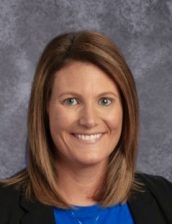The mission of the extended learning program, grades K–12, is to recognize and support the strengths and needs of gifted learners.
- Extended learning programming is best when it’s integrated within the WCSD educational system through collaborative efforts. Administrators, ELP teachers, classroom teachers, support staff, parents, and community share responsibility for meeting the needs of gifted learners, which requires appropriate professional development.
- Gifted learners need opportunities to explore their passions and interests in order to develop their talents, promote self-direction, and encourage life-long learning.
- Extended learning programming should adapt to meet the unique social/emotional and learning needs of gifted learners.
- Gifted learners require qualitatively differentiated curriculum and instruction that includes, but is not limited to, increased rigor and appropriate pace.
- A balanced assessment system is an integral part of determining a gifted learner’s instructional level.
- Gifted learners learn best in the company of their intellectual peers.
- Gifted learners require appropriate opportunities to develop 21st Century skills as noted in the Iowa Core Curriculum.
- Gifted learners are within all cultural and socio-economic groups.
Identification Process
In alignment with best practices for identification, multiple criteria are examined to determine students in need of additional differentiation through our gifted and talented programming. The following criteria are examined:
- Achievement Data: Iowa Statewide Assessment of Student Progress (ISASP) and Formative Assessment System for Teachers (FAST)
- Ability Test Results (CogAT)
Note: Waukee CSD students are screened for Extended Learning Program (Gifted and Talented) services in 3rd grade and again in 5th grade.
Acceleration Process
An Acceleration Process is used to identify students that need acceleration beyond grade level core instruction. Waukee Community School District’s Multi-tiered System of Support (MTSS) process is embedded within the Acceleration Process.
In general, this is how the process works:
- The classroom teacher provides core instruction, including opportunities for differentiated small group and varied independent practice based on student needs. Groups are more flexibly adjusted based on classroom formative assessment.
- The teacher records or documents students demonstrating a need for enrichment beyond core concepts and skills.
- If the classroom teacher, in collaboration with their grade level or content Professional Learning Community (PLC), determines that the student needs further acceleration opportunities, the teacher starts the MTSS documentation to begin the Acceleration Process.
- The MTSS team, which consists of the classroom teacher, ELP teacher, AEA personnel (optional), administration, parents, and others analyze both summative and formative assessment data to determine the type of acceleration best suited to meeting the student’s needs.
- A plan is developed to determine when and who will implement the acceleration plan, a follow-up meeting is scheduled, and the plan begins.
K-3 Extended Learning Program Description
Students in grades kindergarten through third grade are not formally identified as gifted and talented. The ELP teachers provide service to K-3 high-level learners in the following ways:
- The ELP teacher will meet 1-2 times per week with a designated small group (6-10 students) to support the classroom teachers’ work in differentiating curriculum.
- K-3 small groups are fluid and flexible based on student identified needs.
- Multiple data points (reading level, test results, classroom assessments, or teacher recommendations) are used to determine students who need enrichment and extension of curriculum content
- The ELP teacher will consult with classroom teachers during weekly PLC meetings to provide support in planning lessons and activities designed to target high-level learners
Grades 4-5 Extended Learning Program Description
As students transition from third to fourth grade, they are formally identified in the area of verbal (reading) or quantitative (math) using the ELP identification process.
- The ELP teacher provides small group instruction to identified students 2-3 times per week. This instruction may occur in the students’ classroom or in pullout small groups.
- Explicit instruction and accompanying activities are differentiated to provide opportunities for curriculum enrichment and extensions.
- The ELP teacher consults with classroom teachers during weekly PLC meetings to provide support in planning lessons and activities designed to target high-level learners. In addition to consultation, the ELP teacher has opportunities to collaborate and co-teach with the classroom teacher.
- The ELP teacher provides additional opportunities for students based on students’ need and interest.
Grades 6-12 Extended Learning Program Description
ELP students in 6-8th grades are primarily served is through advance course placements. Beginning in middle school, achievement scores and student performance are closely examined to appropriately place students in the course that best matches individual learning needs.
In addition to appropriate course placement:
- The ELP teacher provides small group instruction as needed to groups of students.
- The ELP teacher consults with classroom teachers during PLC meetings to provide support in planning lessons and activities designed to target high-level learners.
- The ELP teacher provides additional opportunities for students based on students’ need and interest (seminars, interest groups, special projects, assistance with college searches and preparation, career exploration, and academic contests/competitions).
Resources & Links
- Social-Emotional Needs of Gifted (SENG)
- National Association of Gifted Children (NAGC)
- Belin-Blank Center for Gifted Education and Talented Development
- Hoagies Gifted Education
- Office of Precollegiate Programming for Talented and Gifted (OPPTAG)


